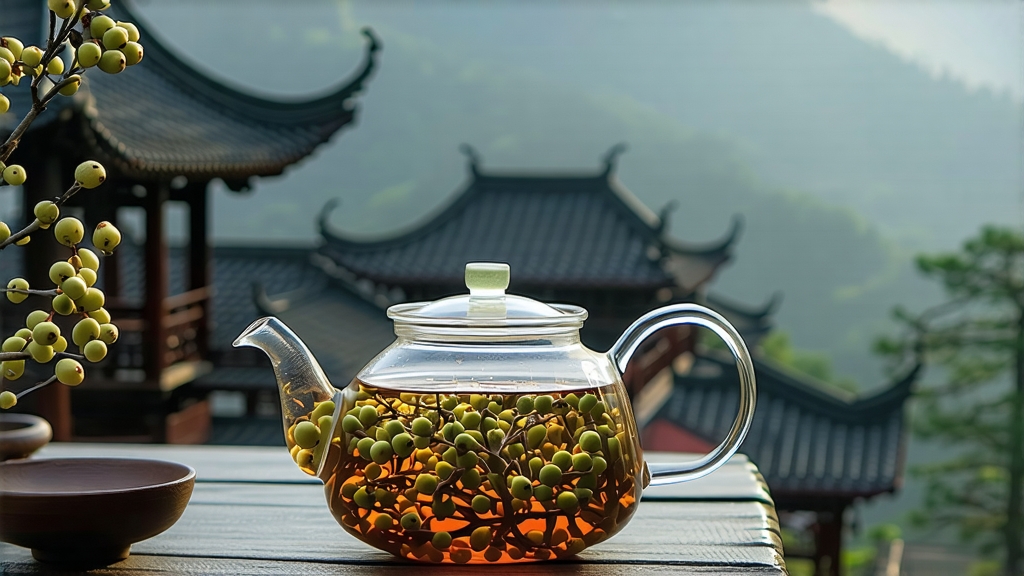
Tucked high on the mist-capped Meng Ding Mountain in Ya’an, Sichuan, a tea once reserved for Tang-dynasty emperors still unfolds its velvet liquor each spring. Meng Ding Huang Ya—literally “Yellow Bud from Meng Ding”—is the least-known yet most aristocratic member of China’s yellow-tea family. While green tea is celebrated for its freshness and pu-erh for its rugged ageability, yellow tea occupies a whispered middle realm: green tea’s springtime vivacity softened by a secret, slow “sealed yellowing” that turns leaf tips the color of pale gold and flavor into chamomile-sweet cream. To international drinkers who have mastered sencha, dragon-well, or first-flush Darjeeling, Meng Ding Huang Ya offers a quiet revelation: a tea that carries mountain wildflowers, steamed corn milk, and a faint minerality reminiscent of wet slate after a summer storm.
Historical scrolls kept by Buddhist monks at the mountain’s Ganlu Temple record the first plucking in 724 CE, when master Wu Lizhen planted seven “immortal” tea bushes on a terrace 1,450 m above sea level. Tang court annals list Meng Ding teas among the fourteen tribute items delivered by horse caravan to Chang’an, and Song emperor Huizong—himself a skilled tea artist—declared Huang Ya the standard against which all “mist teas” should be judged. Caravanserais on the old Tea-Horse Road still echo with stories of compressed bricks of Huang Ya swapped for Tibetan warhorses, the tea’s low astringency prized by high-altitude herders who drank it buttered. After the Ming dynasty shifted imperial taste to greener, more vegetal styles, yellow tea faded from palace ledgers; by the 1980s only 30 mu (2 ha) of heirloom bushes remained. A state-led restoration project in 1986 re-grafted ancient scions onto disease-resistant rootstock, and today 280 mu of shaded terraces supply fewer than 3,000 kg of finished buds each year—rarer than silver-needle white tea and roughly one-third the price of top-grade Longjing, a bargain for connoisseurs who crave history in a cup.
Meng Ding Huang Ya is not a single clone but a micro-ecology of three local cultivars—Meng Ding #9 (small-leaf, orchid aroma), #16 (medium-leaf, thick amino-acid layer), and the heirloom “Ganlu Zao” (early-sprouting, frost-resistant). Buds are plucked only between Qingming and Grain Rain, when morning fog slows photosynthesis, stacking the leaf with L-theanine and reducing bitter catechins. Pickers take only the unopened spear: a downy bud plus half-open first leaf, no longer than 2.5 cm, weighing 0.3 g apiece. One kilogram of finished tea needs 42,000 such spears, all plucked before 10 a.m. while dew still glistens—any later and the sun’s heat activates enzymes that later yellowing cannot mellow.
The craft that nudges green leaf toward yellow is called “men huang,” loosely translated as “sealed yellowing.” It is neither oxidation like black tea nor fermentation like pu-erh; rather, it is a controlled, non-enzymatic browning achieved by trapping residual moisture and heat inside a very thin layer of leaf. The sequence unfolds over four days:
- Fixing (sha qing): buds are tumble-panned for 90 seconds at 160 °C in iron woks, just enough to denature polyphenol oxidase while preserving a 5 % moisture core. The goal is “killing green” without driving off the milky sweetness.
- Primary rolling: under 4 kg of pressure, the bud is gently bruised for 6 minutes to break 30 % of cell walls, releasing amino acids that will later caramelize.
- First wrapping: hot leaf is piled 3 cm thick inside parchment-thin rice paper, then slid into a bamboo cylinder lined with wet cloth. The bundle rests 24 h at 35 °C and 80 % humidity; chlorophyll begins to degrade into pheophytin, the first straw-yellow tinge appears.
- Low-temperature baking: leaf is removed, shaken loose, and baked for 8 minutes at 55 °C to reduce moisture to 20 %.